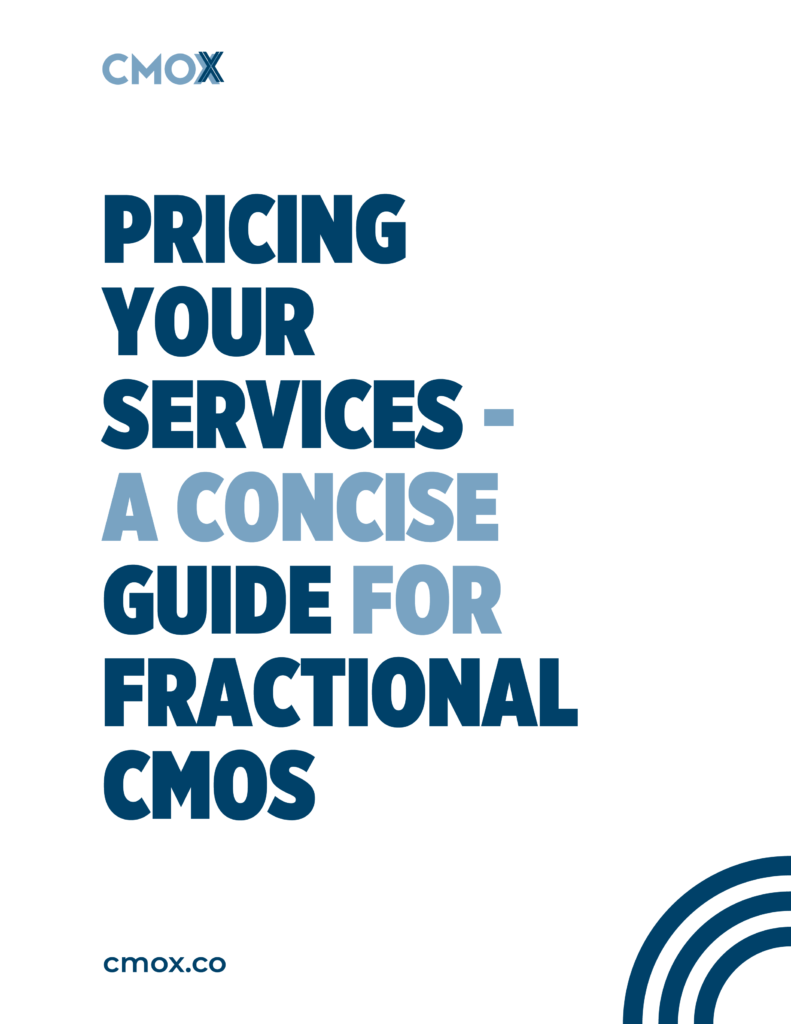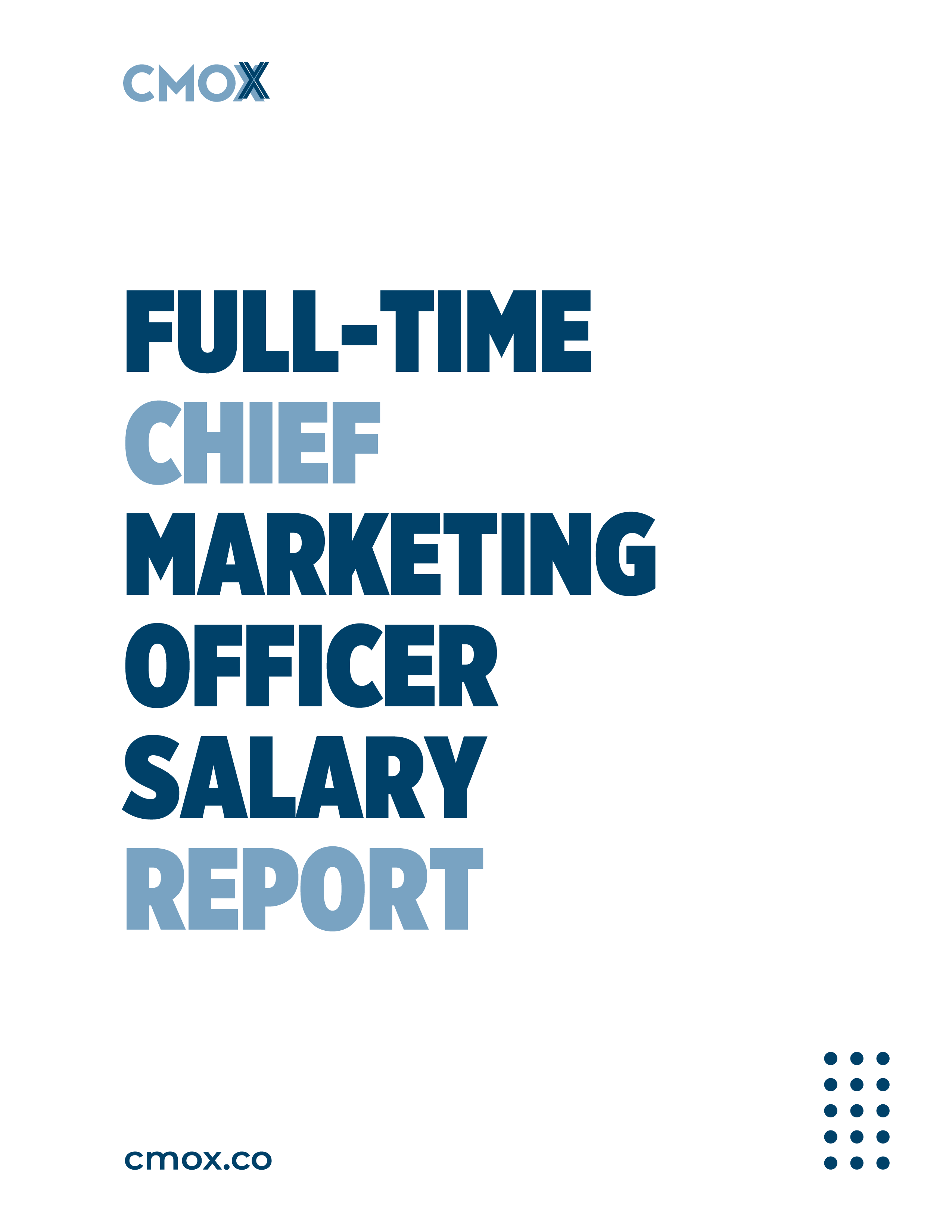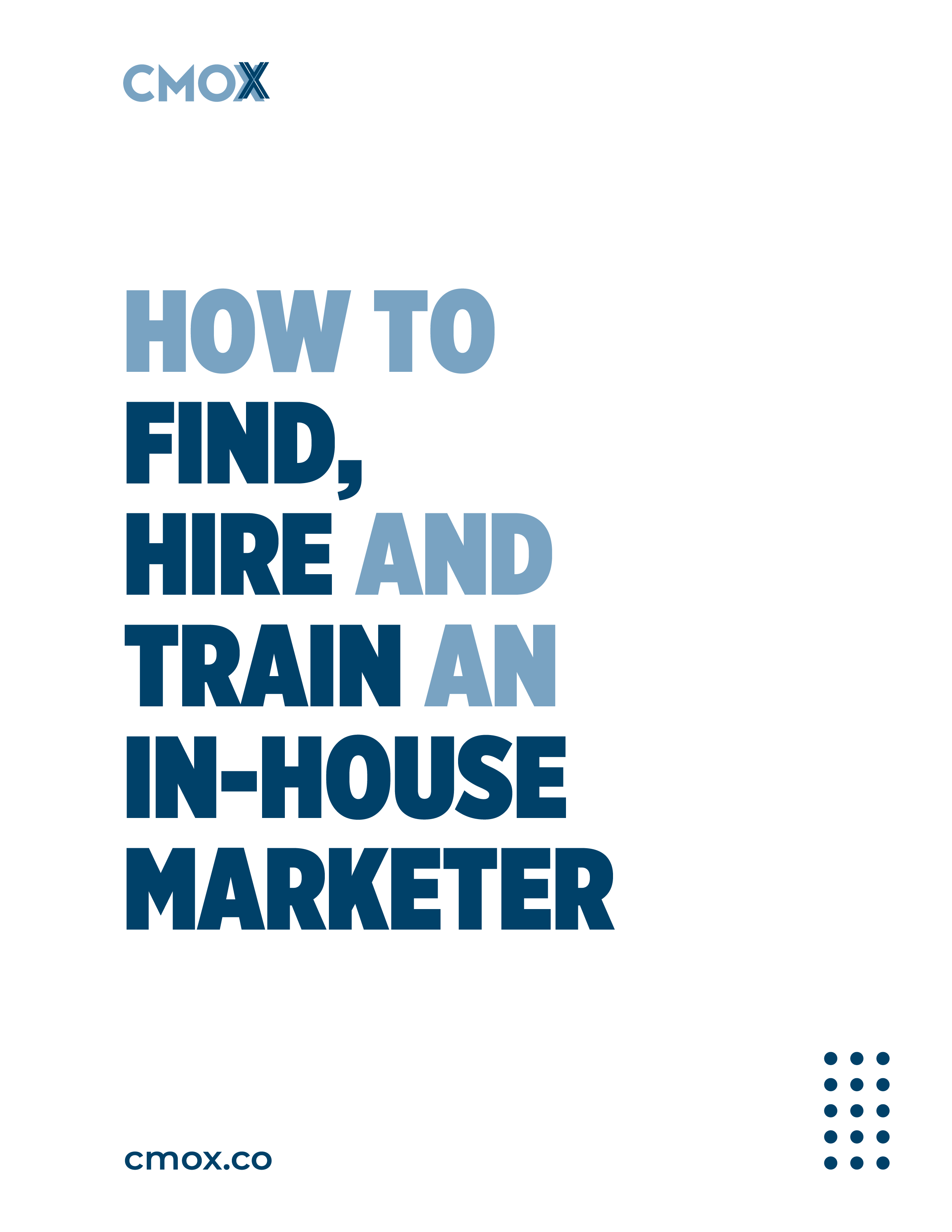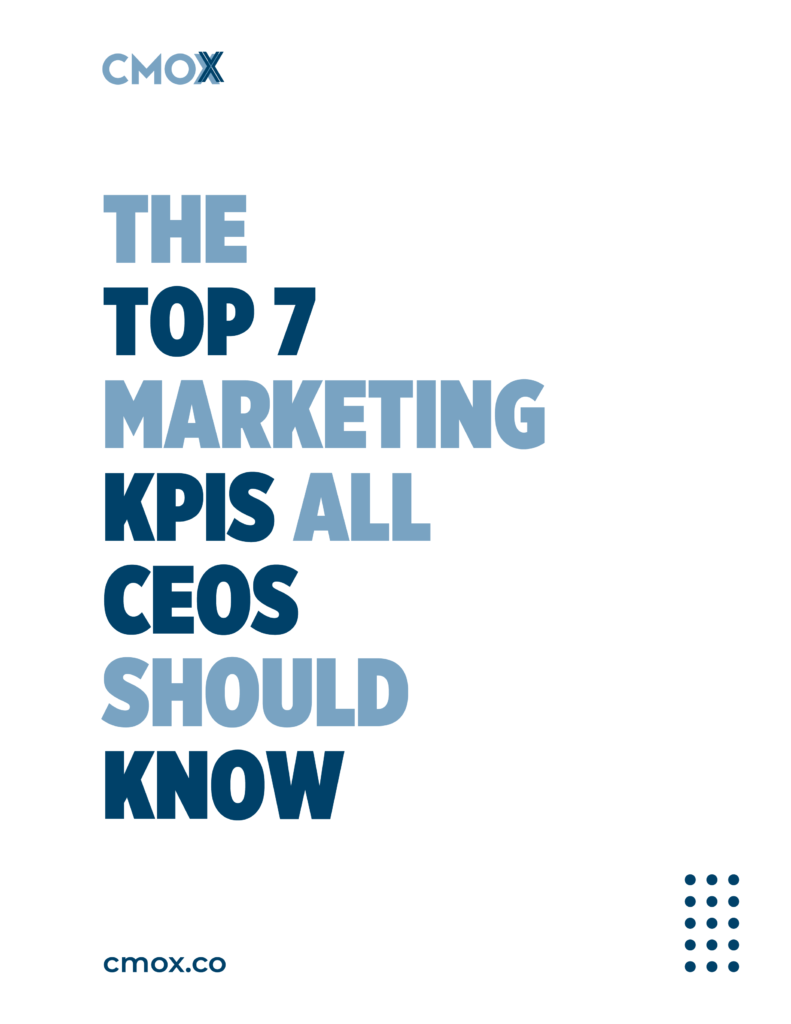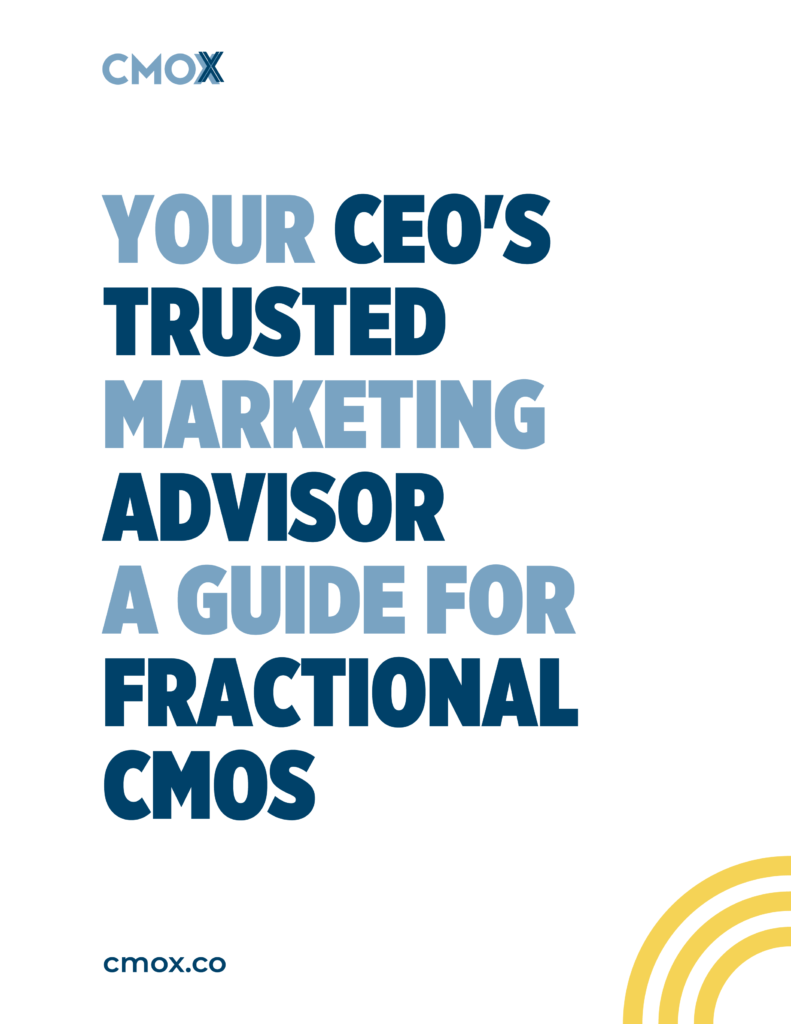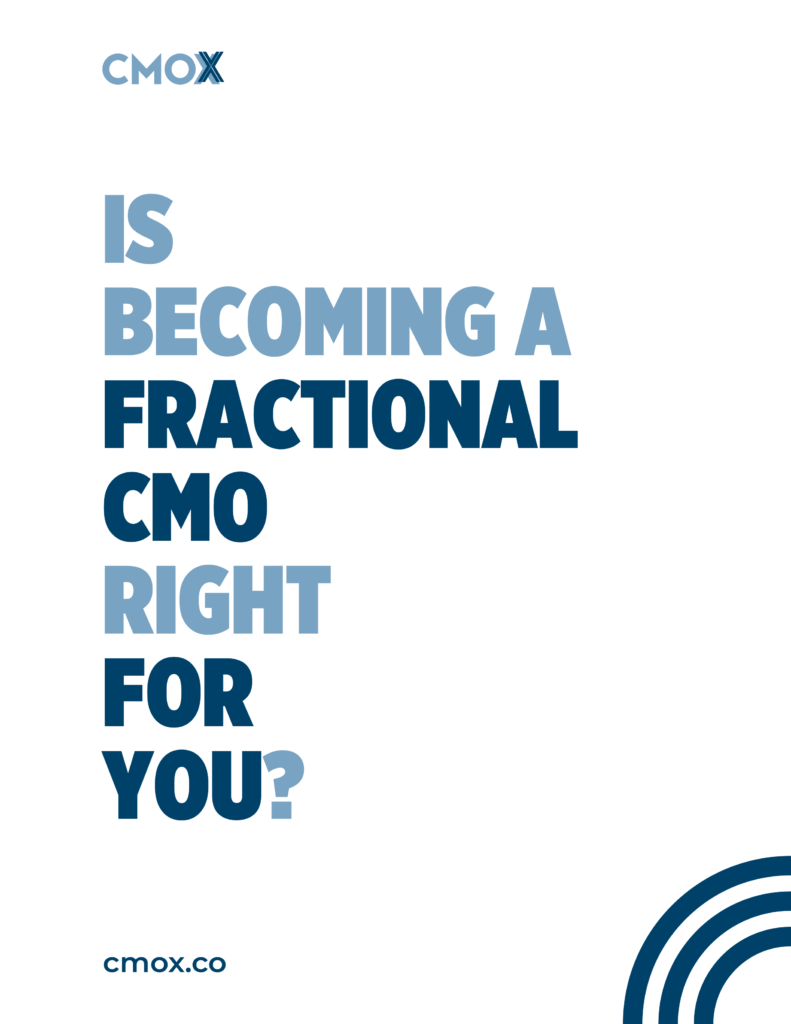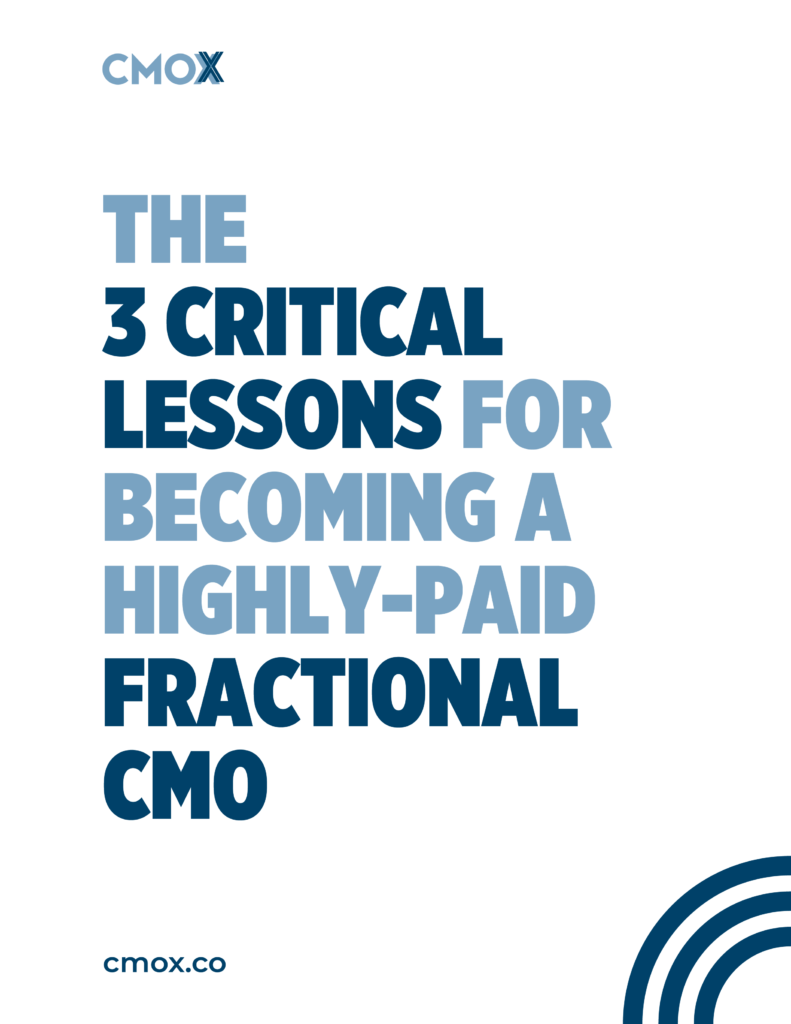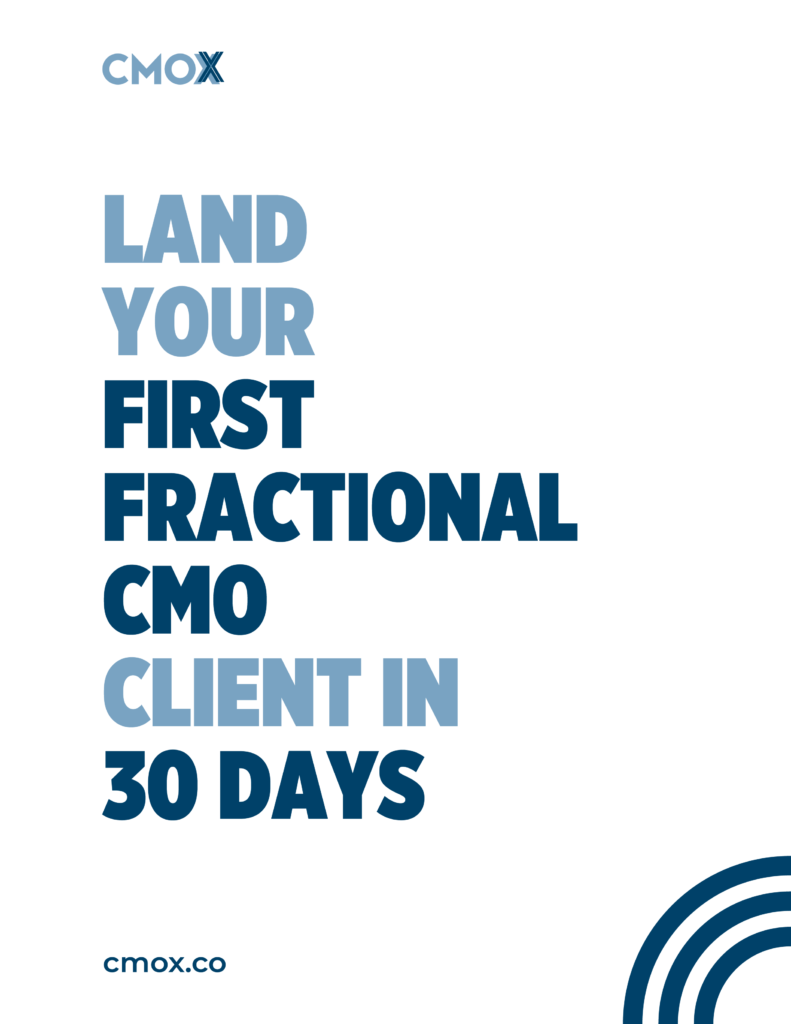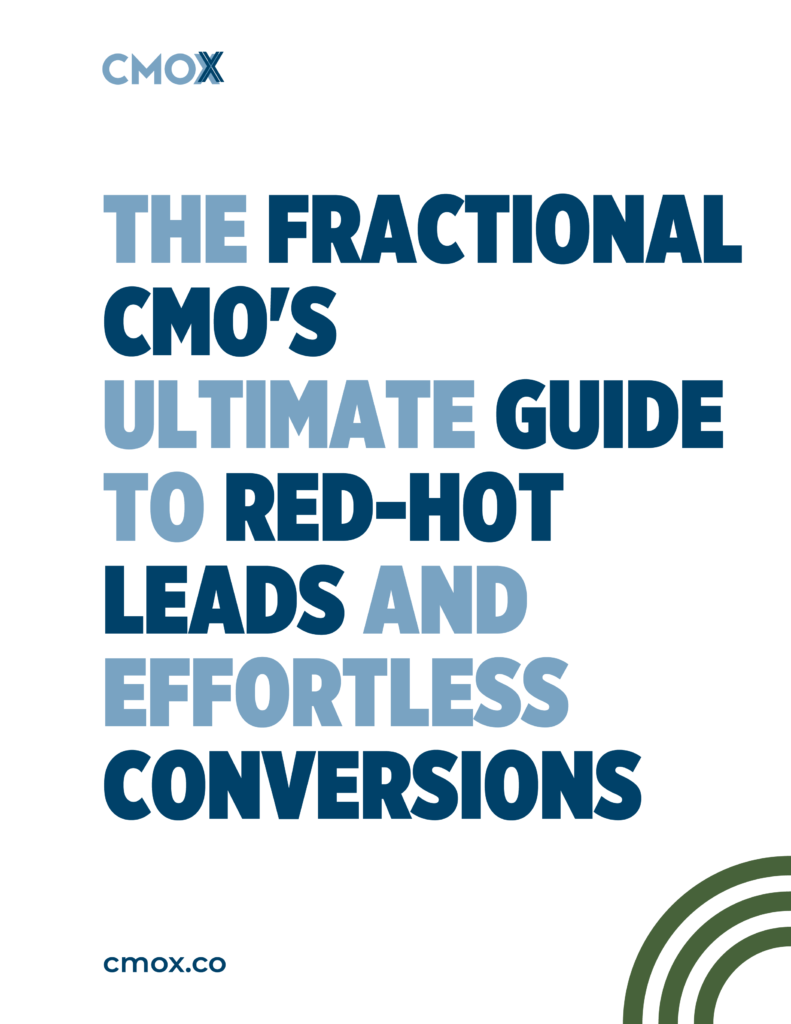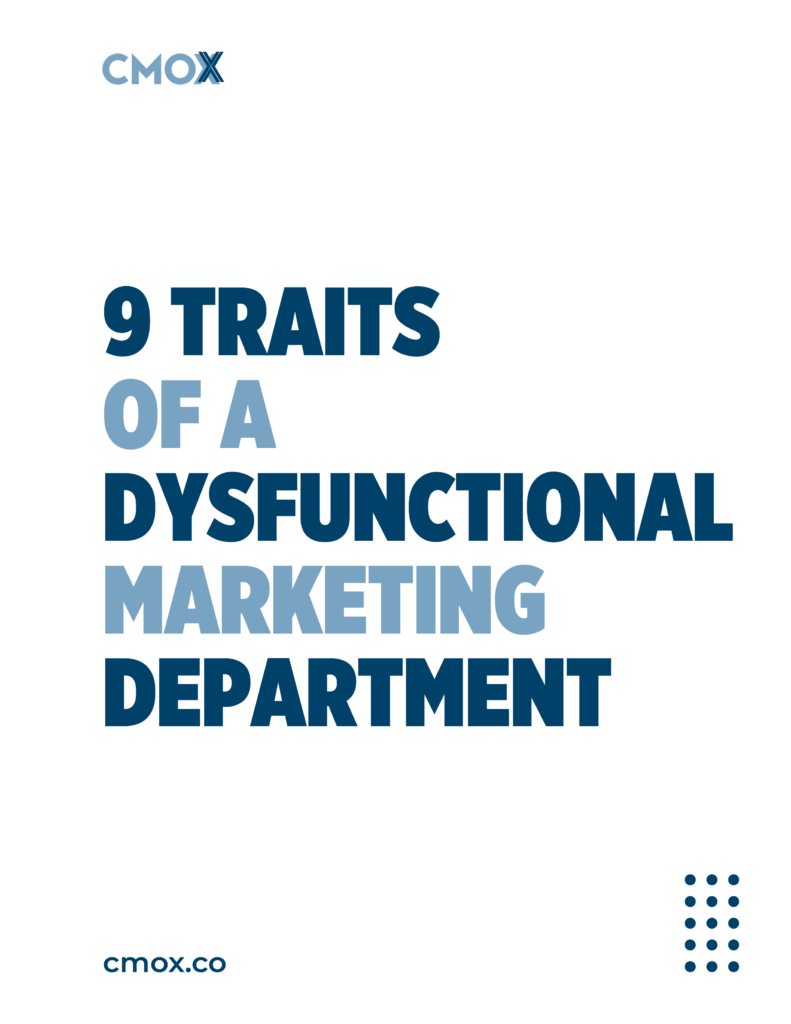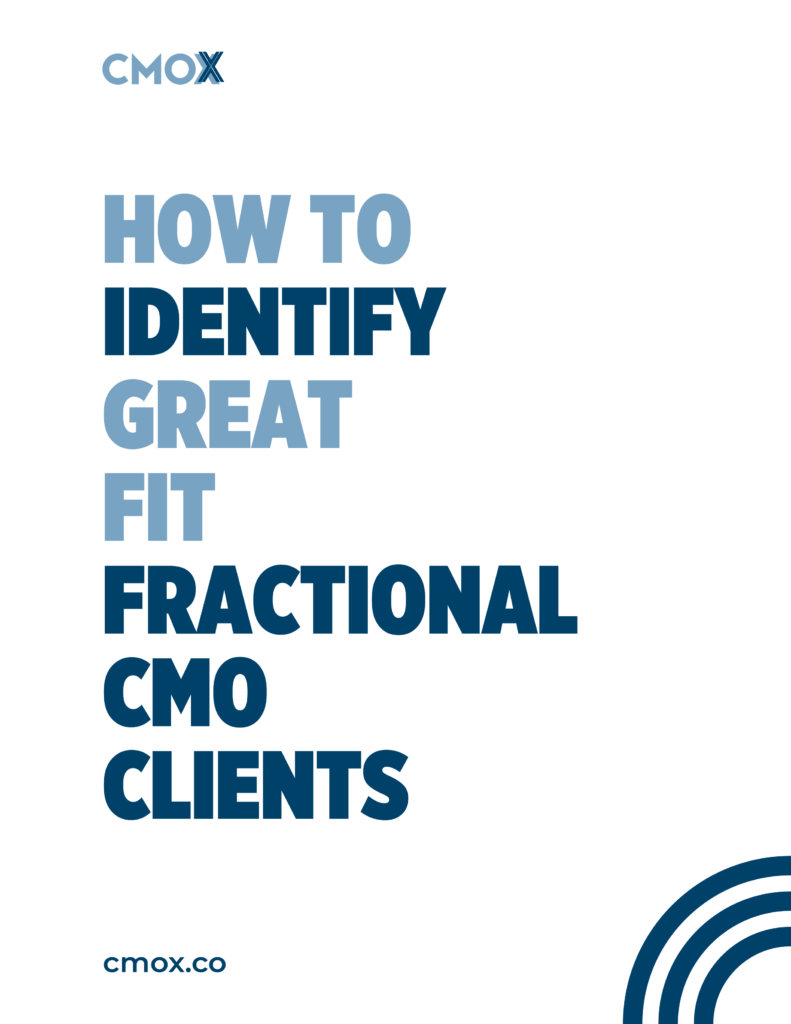Ep #95: How to Hire a Marketing Technician

Feeling stuck as a one-person marketing department? Casey lays out why the marketing technician is the must-have hire to level up your fractional CMO game. In this episode, you’ll learn how to assess team gaps, find the right kind of marketing technician, and avoid the trap of doing all the implementation work yourself. Casey breaks down exactly how to recruit, train, and manage this key role—plus how to scale with AI and global talent without blowing up your client’s budget. If you’re serious about staying strategic and solving bigger problems, don’t miss this.

Episode highlights:
Feeling stuck as a one-person marketing department? Casey lays out why the marketing technician is the must-have hire to level up your fractional CMO game. In this episode, you’ll learn how to assess team gaps, find the right kind of marketing technician, and avoid the trap of doing all the implementation work yourself. Casey breaks down exactly how to recruit, train, and manage this key role—plus how to scale with AI and global talent without blowing up your client’s budget. If you’re serious about staying strategic and solving bigger problems, don’t miss this.
Here’s what we talked about:
- Why fractional CMOs need marketing technicians
- GWC framework for evaluating team members
- Delegation filters and training plans
- Process vs. project-oriented technicians
- Hiring process locally and globally
- AI’s growing role in implementation
- Testing process to vet candidates
Transcript:
00:00:00 Casey: In this episode, we’re gonna talk about the role of the marketing technician and why this is the single most important role that all of your clients have. And if they don’t have this role, you’re going to be forced to do this work yourself. So tune in and learn how to hire the role of the marketing technician, learn how to pitch it to your clients to put you in the position of power as the fractional CMO and not just the marketing department of one. Let’s get into it.
00:00:27 Casey: Marketers of the world, why do we work hard to solve small problems? Why do we reinvent ourselves and our clients over and over? And why are we giving away marketing strategy for free? With advancements in AI, we’re all seeing the marketing department shrink from the bottom up and companies need you to serve them as their fractional chief marketing officer.
00:00:50 Casey: It’s time to solve bigger problems and bring home a bigger paycheck. It’s time to create the lifestyle we deserve and to make a greater impact. This is the Fractional CMO Show and I’m Casey Stanton. Join me as we explore this growing industry and learn to solve bigger problems as marketing leaders. The Fractional CMO Show is sponsored by CMOX, the number one company to teach you how to attract, convert and serve high paying fractional CMO clients on your terms.
00:01:24 Casey: Hey, it’s Casey. I am a huge fan of the marketing technician. This is a role, a title that I came up with. And I think it’s the missing piece for so many of the engagements that I used to have as a fractional CMO. And once I solve this problem, I’ve forever been able to find better fit clients who can afford me and the marketing technicians. And that allows me to get more work done, which makes them happier and more money so that they can pay me more so that I can increase my rates. Yada, yada, yada.
00:01:53 Casey: This role is the biggest thing outside of the work that I do. That’s important for the client. So think of that. When you think about being a fractional CMO, there’s the work that you do, the way that you see things, the way that you focus on solving bigger problems, delegate everything except leadership and practice predicting the future. But what’s the thing outside of you?
00:02:14 Casey: Well, it’s often the labor that gets done. And when we work with companies that don’t have people to do the labor, who’s going to do it? Well, either you got to find that person or you got to do it. I don’t know about you, but I don’t want to be doing marketing labor and calling myself a CMO. I would just have to be honest with myself and say that I’m a marketing agency of one.
00:02:35 Casey: And if you want to elevate to the top role of marketing, which is the role of the CMO, you have to have people doing the work. So we’re going to talk about that role today, the marketing technician, why it’s important and exactly what to do, like how to hire them, the two different types of marketing technicians, how do we think about marketing technicians in the age of AI? Where do you find them? What do you pay them? How do you train them? All sorts of stuff. Okay.
0:02:57 Casey: All right. So big picture. What is a marketing technician? They are the infantry men and women that are on the marketing department that do the labor. That’s the way I look at them. The infantry men and women. They’re the frontline. They’re the ones that are doing 20, 40 hours a week of work for your client to get them whatever the outcome is that you’ve set as the CMO.
00:03:24 Casey: So let me just kind of walk you through the downstream effects of being the CMO. Because remember, if you’re the fractional CMO, you are just the CMO for the business. The whole fractional thing is how you’re paid, but by all rights and privileges, you are the chief marketing officer. So if you’re the CMO, the company affords you as their CMO, what’s your role?
00:03:47 Casey: Well, in my eyes, your role is quite simple: marketing strategy and marketing leadership. That’s it. If you didn’t know that I was going to say that, I really want you to pay attention. Marketing strategy, marketing leadership. These are the two things that you do as a fractional CMO. Okay?
00:04:01 Casey: So what’s the third thing? Well, it’s marketing implementation, and that’s the actual labor and someone else has to do that. So when we go work with clients, there’s really one of three conditions that they could be in. They have no marketing team, they have a marketing team or they don’t really even know what they’re doing in marketing and maybe they got some people, maybe they don’t, it’s kind of like a mess. You know what those are, right?
00:04:24 Casey: But let’s just for simplicity say that there’s a marketing team or no marketing team. Sometimes there’s an in the middle, but generally. If they have a marketing team, the first thing that I’m gonna assess when I meet with that team is I’m gonna see like, are they any good? Are they smart? Are they hardworking? Do they get it? Do they want it? Do they have capacity for it? That’s the GWC question that comes from EOS. I’m a big fan of that.
00:04:48 Casey: Let’s talk about that. What does “Get it” mean? Like, do they get what we’re doing as a business? Do they understand marketing? Do they understand what the priorities are? Do they just kind of comprehend it? Do they want it? Meaning do they want to be in the role? Do they want to be in the business? Do they want to work for a living?
00:05:04 Casey: And then do they have the capacity? I don’t know how EOS describes capacity, but I think of capacity kind of in two ways. One is like, do they have the time in the day that’s available? Because you might have someone who gets it and wants it, but has a bunch of personal stuff going on. And they just can’t do it. They lack the time capacity. They’re dealing with family stuff. They’re dealing with personal health stuff. They had a baby, whatever the thing is.
00:05:29 Casey: And then there’s also people that don’t have the mental acumen, which I think of as capacity. When we think of intelligence, we should think of it as a bell curve. And if you think of yourself as someone who’s reasonably intelligent, you’re probably more intelligent than 50% of the population. Oftentimes we find ourselves on teams where there are people that are below 50% of intelligence of the population that are working on the team. And it can be really frustrating. So intelligence is important to me. It’s something I want to hire for.
0:05:58 Casey: So as I go in and assess a marketing team and marketing department that in those people there, I want to see like, do they get it? Do they want it? Do they have capacity? Are they mentally fit? Are they my kind of people?
00:06:09 Casey: I’ve got a weird rule. It’s a vibe check. If I don’t enjoy having meetings with you, I just am not going to have meetings with you. So all the people that I work with, one of the hiring things that I go through is like, “Do I like your vibe? Do I get you? Do I want to work with you? Do I like the way that you kind of are as a person? Do I like your energy?”
00:06:32 Casey: I’m just helping one of our members inside the CMOX accelerator. And he was looking for some marketing techs. He sent me some video resumes, which I’ll tell you more about in a minute. And he’s like, “What do you think?” And they did all the stuff right to apply, but man, their energy was flat. To me, that’s a no.
00:06:52 Casey: It’s just a no. I don’t want that marketing tech on my team just because I don’t want to have to be the person that brings the energy. I want everyone else to bring the energy. I want there to be this surplus of good vibes on the team. That’s very important to me.
00:07:05 Casey: And I’ll tell you in this day and age, we can choose who we want in the company. We get to be able to pick that. There’s a lot of labor that’s available. There’s a lot of people, especially as we talk later about finding folks local versus in the state or country or even worldwide, it opens us up to finding people who are just a great culture fit. So again, incredibly important to me when you hire this role is that the person just has good vibes. You just like their energy.
00:07:34 Casey: All right, so we’ll talk about that. So this role, when you go in and you’re assessing the company that you’re working with, like a new client of yours as the Fractional CMO. And you’re meeting the team, see if they GWC, they get it one and a half capacity. Do you like their vibes? And then you want to understand the roles and what they’re doing, their responsibilities. Sometimes there’s a gap of like ability and that gap needs to be filled.
00:08:03 Casey: And it can be filled one of two ways. You can either fill it with people that are there or you can fill it with someone new, right? And maybe you horse trade a bit and you get people to swap tasks. So someone that was formerly responsible for ABC sheds C and grabs someone else’s F, right? You’re just trading different tasks from one person to another so that people are the right fit for the different work. Okay.
00:08:27 Casey: So that’s the kind of work that you can do if there is a team. But inevitably you’re probably going to find that there’s going to be a need at some point for more talent. That’s where the marketing technician comes in. That’s the next person that you hire. If I’m assessing a team that I’m stepping into, maybe people are over titled and overcompensated. It’s hard to drop someone’s title and drop someone’s compensation, but sometimes people have a hundred thousand dollar a year salary and they’re not delivering a hundred thousand dollars a year in value and you’re gonna have to go in and maybe share with the CEO that you think they should be let go of.
00:09:05 Casey: Maybe that’s appropriate in that situation. And you talk to HR or whatever, and then they fire the person. Sometimes HR is the CEO, sometimes HR is the CEO spouse, right? Sometimes HR doesn’t exist. So you might have to kind of lean on other people on the team to help you with that. But ultimately, your job is to kind of clean out all of the rot in the marketing department and replace it with qualified talent.
00:09:28 Casey: So that’s the position that you’ll find yourself in there. And then on the other side, if you’re working with a marketing department that doesn’t exist, like it’s brand new, it’s a company, they’ve only had one person who’s part time for marketing or whatever, you need to bring in marketing talent. So the question is, who’s the labor that you bring in? And you could go bring in a marketing director, or a marketing coordinator or a marketing manager. I see that and I think it’s a huge mistake.
00:09:52 Casey: If you bring in those types of people, they’re very expensive. And what are you directing and managing and coordinating if you’re the only person on the marketing department? I just need an infantryman. I just need an infantrywoman. I just need someone out there doing my bidding. And I’ll be very clear about what I want. So that’s this idea of the marketing technician.
00:10:13 Casey: Why the marketing technician is the title? Well, because there’s no salary associated with marketing technicians. If you go to Glassdoor, you’re not going to find a salary associated. So it really is just paying them what they’re worth to the company, not feeling like you have to pay them based on something.
00:10:29 Casey: So let me say it this way. If I hired a marketing director in Philadelphia, where I live, I’d be spending like 120 to 150 or more thousand dollars a year. That’s a ton of money. And that’s just because I overtitled them. So it’d be better for me to pull back the title and hire the technician and then maybe grow them along the way.
00:10:49 Casey: Think of your role as hiring the marketing technician as a kingmaker or a queenmaker because you can take someone, which I’ll share in just a minute, kind of their qualifications, and you can drive them to a long-term really great fit, really great role where they’re paid really well, but you build them from the ground up. It’s a couple year long process to really build a ton of capacity, capability, experience inside of them. So you can take someone from a wildly different background, install them in the company and have them be very valuable. It’s a cool thing to do. So it’s a lot of power that you’re offering, that you have as the CMO of a company, as a fractional CMO.
00:11:26 Casey: So what does the marketing technician do? Well, they do kind of two things. One is they get a delegation filter from me provided to them that lays out a major outcome. Let me give you a couple simple things that they start with. So if someone was joining a company and they’re using HubSpot, I say, “Welcome, in your first week, once you’re hired, after you go through the hire process, I want you to learn HubSpot. You got a week. Go to academy.hubspot.com. You got a week to learn it all. Learn everything you can about anything. You got 40 hours. I’m gonna do my best to block you from everything else, HR calls, all that stuff. Maybe you’ll have to get your new laptop from HR, logins, whatever. But I want 40 hours of your concentrated focus on understanding HubSpot.”
00:12:14 Casey: I’ll tell you right now, a lot of companies have never had a single person go through HubSpot Academy to learn HubSpot. So first week, HubSpot. Second week, maybe there’s another marketing tool. Maybe there’s an analytic tool. I really love Julian at MeasureSchool. I think they do a great job over there. So if you’re using Tag Manager, say, hey, we’re using Google Tag Manager. Here’s a delegation filter on it and go learn Tag Manager. Go learn how it works. Look at our implementation of Tag Manager. Research all of this stuff and learn what it means.
00:12:44 Casey: If I have a hungry person who’s smart and who uses ChatGPT well, they’re going to learn pretty effectively with me giving them just major outcomes. That’s what you’re looking for here. I’m not giving them individual “do this” tasks. I’m giving them a week to grow in their competence about a new platform or tool or whatever. So that’s a couple of weeks right there. And maybe they’re understanding the business or reviewing the scorecard, or maybe they start pulling the other data on the scorecard for you, but they do big tasks to get started in the business to support you.
00:13:16 Casey: And the tasks are really going to be based on what’s most useful to you as the CMO. Like, what do you think is the biggest risk to the business? Or what is the biggest benefit to you or whatever? So for example, I might meet with the marketing technician and say, “Hey, I laid out an initial scorecard for the role. These are the data points that I want. Total revenue each week, I want total leads, MQLs, SQLs, calls booked, calls attended, offers made, cash collected, total email sent, active leads inside of HubSpot,” that kind of stuff.
00:13:53 Casey: I’m gonna lay out that big list. I’m gonna say, “I need you to put that together in a Google Sheet. It’s gonna be ugly this week, but you got two days to get this data in for this week and last week. And then I’ll approve it. I’ll tell you what I think should be different. And then I want you to make the next version of the scorecard and the next version.” And we build and build and build until we have a really comprehensive marketing department scorecard that they own that they built out for me.
00:14:18 Casey: You see, my role is to solve bigger problems one, and then to delegate everything except leadership, two. So if I’m delegating, I’m saying like, “Okay, here’s the scorecard. Here’s the stuff I want. Go make it.” Now like, “Okay, cool. I’ve never used Google Sheets before.” “I think you can figure it out. Go watch some tutorials.” So I don’t do any handholding.
00:14:38 Casey: The first month of someone at the company, honestly, it’s not that effective. They don’t really move the needle for me. So the marketing technician should be hired when you can afford a month of kind of dead time to get them up to speed. I really like this approach because I could take someone with much lower skill set and bring them onto the team and really build them up.
00:15:02 Casey: And as a result, you can pay them less. If I have someone who knows how to do all of this stuff, I’d probably pay a lot more for them. So I’d like to start them at ground level and build them up for the company. It’s the lowest cost that kind of helps offset your cost, especially when you’re not producing results early on. You let the client know for the first 30 days, I’m going to get them up to speed. Then they’re going to be cooking with fire.
00:15:26 Casey: And then the marketing technician has clear outcomes that they own. I think of this as I want to put them inside of a bumper sticker, inside of a headline, inside of a mission, an operation, an objective. And I want you to think about this. If you think about any military objective, it’s very clear. The full command center knew everything. They knew what the mission was. The mission is to go out and kill this person or to take this land or to do this thing.
00:15:58 Casey: And everyone’s focused on that one mission and the aircraft has to do something and there’s the refueling and then there’s the GPS thing and then the missile thing and the people thing and the boats and the food and all of the different components are owned by different people. But there’s an overarching mission and that’s the context that you have to set as the CMO. So I think one of our jobs as being the CMO is kind of being the cartographer, being the person who says, “Here you are and here’s where you’re going. Is that clear?”
00:16:28 Casey: So what’s an example of this kind of super simple thing? I think of Keith Cunningham’s idea from The Road Less Stupid, where he says, “What’s this on a bumper sticker?” That’s kind of how he summarizes it. I want you to have a bumper sticker for folks. Stupid, simple, couple words. It says something like 100 new customers a month. Boom, that’s their focus. Another one is 50 MQLs per week from paid traffic sources. Boom, super clear.
00:17:02 Casey: You can take someone who doesn’t understand marketing, give them that mission, give them the subordinate parts, give them access to YouTube, Google, ChatGPT, whatever, and they’re gonna be able to figure it out. And you’re there to support them. The delegation filter is a document that you fill out that has a lot of these details of what success looks like. If you wanna grab a copy of that, it comes with my book. You go to cmox.com/book and you can order copy my book and get the toolkit associated with it. That’s the toolkit. The delegation filter is amazing. It’s amazing.
00:17:35 Casey: So if you do this effectively, let me tell you what would happen. I was in a company a few years ago, and we hired a woman and I just didn’t have any more hours in my commitment with them to help her. But she was coming on to help another side of the business. I was focused mostly on generating customers, but she was helping on a second side of the business, which is after they were customers, servicing them in a different way.
00:18:00 Casey: And one of the main things that we wanted to do was to handle the marketing of a big event. So go to this big trade show. It was in Vegas. Now, I just didn’t want to go. I just didn’t want to go to Vegas and do this whole song and dance. So we brought her in and I delegated to her effectively the complete planning and execution and recapping of the event. It was a huge lift, but I had a few months to get her prepped. I was like, “Great. It seems like you need to find a print vendor, go find print vendors and get them back to me. Give me a list back by Wednesday.” She’s like, “You got it.”
00:18:36 Casey: So she would do all of these major kind of research projects and steps for me. And then she went on site to the event. She had booked all the flights and hotels for all the sales guys. She got all the collateral there. She set it all up. She executed like a pro. I just texted her and just checked in with her. And after it was all said and done, when she got back, I took some of our marketing budget and I bought her a really nice spa day. I spent a couple hundred bucks and she had a day at the spa.
00:19:06 Casey: It was just like, she put it all in, she focused. She executed an awesome outcome. There were two print errors on the collateral that we identified, but everything else was perfect. She came back super proud of herself. We made a bunch of money from that event. She had a spa day. She felt great. And then boom, that next day she was back to work and she was just crushing it.
00:19:29 Casey: That’s a marketing technician. That’s a situation where I hired a marketing technician in the US. We paid US rates for her. She was, I’d say mid twenties. I don’t remember her exact age, not very experienced. I mean, she went to college, probably a good one, but I don’t know. And I don’t really care. Just choose the kind of girl that could get stuff done. And she did. She was awesome. And she still works at that company today. She’s just great.
00:20:04 Casey: I can give you another guy. So a guy that I worked at, at a company and I needed someone 20 hours a week. And I just reached out to him. I knew him and I was like, “Hey, I got this thing. You want to apply?” He applied. I had the client review it. They loved him. They hired him. He worked 20 hours a week there. : I had another project. I was like, “You want to jump on this one?” He jumped on that. He’s been with that company now full time for years. Just doing really good work, full time US.
00:20:30 Casey: Had another one recently that I hired from a major city in Arizona. And I found her on Indeed– excuse me, linkedinjobpost.com. Not Indeed. She’s killer. Came in 20 hours a week, made a full time offer. She’s amazing. She’s great, great energy. I get on calls with her. She just brings just kind of like a – I don’t know, a freshness of energy. And she’s smart and she’s on top of it. It’s awesome.
00:20:55 Casey: And just think about what they get from me. They get someone who is coaching them to build a better understanding of how marketing works. We got on calls on some cadence based on what my contract is with them, my engagement is with the client. Maybe we’re meeting once a week or every other week or something like that. And I’m like giving them everything they need to do to be efficient, but they still have to kind of discover how it actually gets accomplished.
00:21:25 Casey: And it’s challenging, it’s exciting. It’s like pushing them further into their career than kind of they would otherwise go. It’s like I’m hyper driving them into their career. They’re grateful for the growth, for the opportunity. It’s just a ton of fun. They just come with a great energy.
00:21:52 Casey: I’ve hired marketing technicians from Jamaica, India, Philippines, Ukraine. I mean, all over the world, Pakistan, Afghanistan, London. I hired a woman from Indonesia, Singapore. So folks from all over the world that can do this work. Sometimes you need to be in person.
00:22:21 Casey: So I just hired a marketing technician on a project and they need to travel to an event that happens with the client’s customers about once a month. So they have to be within a reasonable driving distance. But it’s great. The client, let’s just say they’re in Philadelphia. Think about what two hours of driving is from Philadelphia. I can hit major cities like New York City is within two hours of Philly, but I can also hit coal country. And coal country is pretty cheap. So think about some smart, hardworking person in coal country who doesn’t otherwise have a great job opportunity, you’re able to bring them in and make a great lifestyle for them and have a lot of flexibility.
00:22:58 Casey: All right, quick note on managing these people. I manage them to quarterly outcomes. And then we check in weekly or every other week and have ad hoc meetings early on as needed, especially early in the quarter and early in the engagement. But over time, they just get it and they just do their work. And like, oh, their best friend’s getting married over the weekend. And they just let me know, “Hey, I’m going to be out Friday.” I’m like, “Okay, cool. Have a great time.”
00:23:22 Casey: I don’t have to check in with these people and just ensure that I’m squeezing every minute of an eight hour workday out five days a week. I don’t have to track their PTO. The way I manage these people is I say, “Listen, I’m going to give you outcomes every single quarter. And my expectation is that you crush them and that we have the best marketing team. And if life comes up and you gotta do stuff and travel or whatever, obviously keep in touch with me let me know. I need you to be available for our regular meetings, et cetera, et cetera. But if you wanna cut out early on a day, that’s fine. Just work a little later the next day or come in a little earlier, whatever.”
00:23:53 Casey: I wanna get maximum output from them, but I don’t wanna micromanage them just because that’s a waste of my time. I just wanna create a bigger container for them to be successful inside of. So here’s a big vision for you.
00:24:06 Casey: When you create a future for these people that is bigger than maybe the future they have for themselves, they tend to want to stick around. I’ve had people on my team for years. My first hire, Rafael, he’s still with me. I adore the guy. And he joined as a marketing technician with no relevant marketing experience. Certainly no experience in the industries that we were in. And he learned and he did a great job. And I’m so grateful for his time and commitment.
00:24:38 Casey: I’ve gotten Nibir on my team. He’s been with me for years too. And Nibir came in with like a little bit of experience, but so much of it is like kind of me directing him and then him researching it or hiring a consultant for an hour or whatever, just to like learn. And then Nibir does a great job. He’s built a full tech team out underneath him. I’ve got a bunch of folks like that on my team.
00:24:58 Casey: So, let’s talk about the two different types of marketing technicians. This is really important. This is critical for choosing them. So if you write some notes down, the first one is, do you want them to do a repeatable thing or do you want them to be there for the new thing? It’s just different energies.
00:25:18 Casey: I got to a guy on my team, Irene. She’s great. Irene doesn’t do much new stuff. She just does the same old, same old, but she does it exceedingly well and she improves it marginally every single time she does it. But she does the same thing over and over. That’s one energy, which I would call follow through energy or process energy. Dan Sullivan would call it a process manager.
00:25:25:42 Casey: On the other side, you have a project manager. Projects are chaos. They’re new, they’re different. That’s me. I want to be in that kind of creative space. I find no joy in watching a movie for the second time. I want a new movie, new movie, new movie. I just like that. I’m a quick start. I like the novelty of it. I like the excitement of it. That’s what gets my attention.
00:26:05 Casey: I have a bookkeeper. The dude is just – excuse me, I have a CPA. That’s what I’m thinking of. And he’s just calm, right? Process driven calm, just trying to get all the books done by the 15th so that he can have his vacation, whatever in May for three months and go kick it. The dude is just calm, steady, does a great job. I love that energy that he has, not my energy.
00:26:28 So if it’s a process thing that I need to get executed, I’m bringing in a process manager. And if it’s new and different and creative and always changing or chaotic or where we have to triage different elements rapidly, I want someone that’s more of a project manager.
00:26:46 Casey: I’ll tell you, I have a process manager in one role. And when I was kind of asking her about the role and stuff and her likes and dislikes about it, she just disliked all of the stuff that was new and different and she really liked the stuff that was steady. Well, good news. We need someone that runs the steady stuff.
00:27:03 Casey: So I’m not of the belief that she has to change. I’m of the belief that it’s my job to put her in the right seat so that she can excel, that she can just do a great job, feel good, have pride, create those systems and structures that I never would have thought of because I do it one time and say, “Next.” Right? So that’s what we’re looking for. Decide when you’re hiring a marketing technician what they need to do then decide do they need to be in office or remote.
00:27:31 Casey: Some clients like them in office, then once you kind of say like, “Hey, I can get someone for, I don’t know, half the price overseas,” kind of changes things. So where overseas do you want them? You get a couple of choices. Let’s just say you’re in the US. I’m in Philly, so I’m on a New York time zone, East coast. I could hire someone in Philippines. Philippines works effectively 12 hours ahead.
00:27:54 Casey: So they work while I sleep which means the team could do a handoff at end of the day. And then the Filipinos work all night long. We wake up and the work’s done. That’s cool. I like a little bit of crossover of time. So that’s okay. But you might ask that Filipino to work a little late or come in a little early, just so there’s enough crossover for you to have maybe two hours of co-working per day.
00:28:15 Casey: And then if you move your way back West from there, you’ve got all those other countries. You’ve got Myanmar, you’ve got Thailand, you’ve got Vietnam, you’ve got India, huge talent pool, obviously, in India. Just move your way all the way back. Then you’ve got the Middle East, you’ve got your Afghanistan, Pakistan, Iraq, Iran. Then keep moving west. You’ve got Africa as a continent.
00:28:47 Casey: There’s like a billion people getting on the internet over the next 10 or 20 years. There’s a ton of available laborers that are smart, hardworking, looking for opportunity. And then as you move your way further west back to the Americas, look central in South America, there’s some really good cost arbitrage there. And those people tend to work Eastern time zones or US time zones. So that’s nice too. It’s cool.
00:29:16 Casey: If you have political beliefs, you can kind of secretly hire someone who supports your beliefs. You say, “Oh, I want to hire someone from this country because I want to support them, those people.” Or maybe, you have a family heritage or something, or you believe in some cause or something, and you want to hire people from a certain place, you can post a job there. And it’s not that you’re posting the job at the cost of getting a better candidate – of not getting a better candidate, just post a job and get a good candidate because there are great candidates all over.
00:29:46 Casey: There’s great candidates in Russia. There’s great candidates in Ukraine. There’s great candidates in Palestine. There’s great candidates in Israel, right? You can just invite some of those people to the job post, that kind of thing if you want. So it’s your call how you want to play that, but there’s plenty of qualified good talent.
00:30:05 Casey: So let’s talk about what you pay them. It’s an interesting question. So if they’re US based, I think it’s $25 to $35 an hour. That’s what I say, as contractors to get started 20 hours a week, 25 to 35 bucks an hour. If you make them a full-time offer, you can pay them a little bit less because then they have the consistency of the full time stuff. Okay, but like $25 to $35 an hour.
00:30:26 Casey: If they’re overseas, you can get a full time person in India for $1,400 a month, all day long. Filipinos for $1,000, $1,500 a month. That’s like 8, 9 US dollars an hour. You could maybe find that in the US, but I think those rates are pretty low. So you can find these people anywhere in the world.
00:30:52 Casey: I like hiring really from just a couple of places. I like hiring US people from LinkedIn job posts. And then I just post it and ask everyone, “Hey, do know anyone? If you know of anyone have them see this link or DM me. I got a job post if you’re qualified or know someone who might be whatever.” So that’s one way to do it is on the LinkedIn side. And for cost per day spend 20, 30, 50 bucks a day, get a bunch of candidates.
00:31:20 Casey: I like Upwork a lot. I do most of my hiring personally on Upwork. I think it’s great, great talent pool. You can see past work that people have done. It’s awesome. And if you work with them for years at some point, if you find it ethical, you could move them over to DirectPay and leave the Upwork ecosystem, which tends to give folks a 10% raise just by moving the payment off platform. Those are cool places to find talent.
00:31:47 Casey: Mom groups are a great place. I was just chatting with the CMOX boardroom folks and those are my most successful members inside of CMOX. And we’re talking about the talent pool of moms and you can find some really high quality talent of moms who are trying to get back in the workforce and don’t have a lot of experience, want to start a new career, want to be relevant, want to be useful, want interesting work, but don’t want to be confined to certain work hours because they gotta mom most of the day. So that’s a cool place to go to. And maybe that mom is going to kind of grow into the role full time when the role’s available. You can kind of time that stuff out. That’s awesome.
00:32:26 Casey: College kids, you know, bringing them in as interns, I think is a little edgy. Nothing wrong with an intern. I think you should pay interns. I think you should always pay everyone that you work with on time. I think that payment should never be a question. Take that very seriously that everyone gets paid on time appropriately. Interns are okay. Do I have any reason to go back to my alma mater and go post internship jobs? Like, no, I feel like I’m a citizen of the world. But if you feel really called to go back to your university and post jobs, like, by all means, go ahead. Yeah, that’s fine.
00:33:04 Casey: So how do you hire them then? That’s the next question. Well, I want to write one job post, and I want people to apply in one simple way to me. And I’m gonna give you a couple of things. One, the job post title has to be interesting. Have the word remote on it. Talk about the company. Remote XYZ company seeking marketing technician for ABC.
00:33:28 Casey: I want your job post to be interesting and encouraging and fun. I like to start my job post with lines that sound kind of like, “I can’t believe I found you. I’ve been searching for you for so long. And yet, now you’re here on this page. If you’re reading this, this job is for you.” Like just to have a pattern interrupt.
00:33:46 Casey: Talk about who the company is. Talk about what the role is, some of the stuff that they’re going to be doing, “You’re be learning these things, these things, these things.” And then state, I want someone with experience or without experience. So I say I’d love someone with experience, but I’m happy to entertain someone without experience if they’ve got enough grit to learn it. If they’re willing to leverage AI tools to hyperdrive and speed run their understanding of what we’re doing so they can get a better work product for us in less time.
00:34:15 Casey: Write that out really clearly, make people read it and be like, “Wow, this one’s different, this one’s special.” If you can help it, don’t let HR touch it, because they’re just gonna make things just feel really boring. I feel like the job posts that HR touches just remove all energy and excitement. And again, if I’m gonna hire someone that has good vibes, I want to be posting a job post that has good vibes.
00:34:41 Casey: Here is the two step thing that is absolutely a requirement and you must do this. The first one is the way that they apply is they send an email to the client, HR at companyname.com with the subject line of “Casey, it’s me, Bob, the marketing technician you’re looking for.” It’s important that they do that. That’s the subject line.
00:35:05 Casey: And then the body copy, I don’t care what’s in the body of the email. I just say send me an email with this subject line and in the email, write that you’re applying for the job, attach your resume and record a two to five minute Loom video of yourself answering these questions. Your experience in marketing, what’s exciting about this job post, where you live, whatever. And that’s it. And now you can go post that job post in 100 different places and not have to monitor 100 different application intake pages.
00:35:40 Casey: I remember when I was hiring the integrator on my team, Michael, I was going to have to go through a thousand applicants because I posted it and I think it was 24 hours, I had a thousand and one applicants. I think that was the timeline. That was on Indeed. A thousand and one people applied on Indeed to my job. I was like, “There’s no way I can, I can review this.” So I deleted that job post and I rewrote it as I’m stating here. And they had to email me directly with these certain criteria.
00:36:11 Casey: And if someone had the subject line wrong, I deleted the email. If they wrote it and it linked to a Google Drive video, I delete the email. If the video was less than two minutes or more than five minutes long, I delete the email. They didn’t follow the instructions. They don’t deserve a reply from me. That’s my position. You might not like it, but I tell you, there’s really no other way around that because you got to hire this role and not have it take a thousand hours to do.
00:36:40 Casey: What you’ll find is that a handful of people will apply appropriately. Like three, five, or every week or two. And then all you got to do is just watch those videos as they come in. And I don’t have a set time until I review. I review as they come in. And then I just keep peppering it out, pushing it out, finding new places to push it out. Find a new Slack group, find a new Facebook group, find the Latin America EA group on Facebook and see if you can get a post there. Just go through that and see who you can find.
00:37:13 Casey: Let me tell you about Nibir. When I hired him, I posted on Upwork and I found nobody. And I waited a week and I got a bunch of garbage applicants. And I just thought like, “Is it me? Is it the job post? Is it the job offer? Is it the market?” And I just didn’t know. So I just sat on it for a couple of days. And a week later, it’s like, “All right, I should just post something.” And I think I was just short on time. So I just reposted the same exact thing. Just reposted the same job post and Nibir applies. And I was like, “Oh my God, Nibir.” And the rest is history. I mean, he’s been with me for years as a result. Never met him, talked to him every single day. Never met him face to face. He’s in India. I just love the guy.
00:37:53 Casey: So don’t think because you didn’t get a good applicant in the first three days that it’s a failure. Sometimes it takes a while. If you want a heuristic, it’s 45 days. 45 days from job post to job start. 45 days. I try to do it a lot faster, but 45 days. That’s your number.
00:38:13 Casey: There’s places that you can go to find these folks, which is fine if you want to go that route. If you want to go find some talent somewhere else, so you could go find like an agency that has talent. And these agencies typically work out of certain countries like Latin America or Ukraine or Philippines or whatever. And you can go to them and say what you’re looking for and they’ll find you the person and then you pay the agency.
00:38:36 Casey: The only thing about that is I want the person long-term. And ultimately I want them full-time. This is a huge hack. I want the person full-time because I want all of their focus. The difference of spending $700 a month versus $1,400 a month is probably insignificant for your client. And that gets you not just twice the outcome, but it gets all their focus.
00:38:59 Casey: I don’t want someone who’s like, “I just lost my other client. got to spend extra hours searching for this new client and interviewing and yada, yada, yada, and doing project based work.” It’s just like, “Dude, let me buy all of your time. What is it? 1400 a month? Done. Okay. You’re in.” And just lock them in so you can go from there. These people tend to stick around longer because you’re building them up and you’re building again, that future. That’s so big for them that their future for themselves can come true instead of your future for the company. It’s great. It’s an awesome place to be.
00:39:28 Casey: How do we think about this with AI? Well, specifically, I think about operator and computer use. Maybe you’ve heard me talk about this. I think this notion of computer use – so computer use is the name of the idea or the concept. ChatGPT calls it operator, Claude calls it computer use. But it’s about having an AI that can use a keyboard and mouse and do things for you.
00:39:53 Casey: And certainly we’re getting there, I don’t know, 6 months, 12 months, two years, three years. We’ll all probably just have a virtual machine where someone’s doing work for us and it just happens to be an AI and it’s our own personal AI and it gets better and better. I mean, I’m going to have one. Right now I have my ChatGPT and my wife has hers and all right, our ChatGPTs give us very different answers when we query them because they have different understandings about who we are and our preferences and things like that.
00:40:21 Casey: So soon we’re to have this computer use stuff that’s available. And I think we’re going to have to hire less marketing technicians. But it’s totally possible that you could have four or five marketing technicians at a company where you’re the CMO. And then maybe your next hire is a manager who manages them. And maybe it’s actually one of the marketing technicians moves up to a manager role, manages all those technicians for you. And then you work directly with that manager. That could happen.
00:40:48 Casey: So you create some strata between you and the labor. And over time, that could just get bigger and bigger. And I think it’ll be augmented with AI, specifically computer use. But everyone that you hire in the marketing tech role ought to have a paid ChatGPT subscription. We’ve been considering kind of what to do here because of Google’s forced adoption of Gemini. And everyone who has Google Workspace and a paid Google Gmail, they now have to pay for Gemini. It’s like forced in.
00:41:21 Casey: Yet Gemini just isn’t as good as ChatGPT. ChatGPT is just better. So I would give the people who write reports a $20 a month ChatGPT subscription. They spin up their little projects and be able to do stuff inside of that. And you can get a tremendous amount of work done with a smart person who gets it, wants it, has capacity, has a AI tool at their beck and call, spent the first month learning the full framework of how the business works, all the tools got deep into HubSpot University and all that stuff. You do that, you’re off to the races.
00:41:52 Casey: There is something else that you can do, which I think is useful, that’s worth considering, and that is to do a paid test early on in the engagement. So you find someone, like everyone, no matter who I hire is a 30 day trial period. If they’re a contractor, full-time employee, whatever, it’s still a 30 day test period. At the end of the 30 days, we have an honest conversation. Are we moving forward or not?
00:42:15 Casey: And you could do a test that was seven days long and have people come in, multiple marketing technicians fight for the same job, never know one another and just give them the same requests and say get to work and see who produces the best work product, who communicates the best, who has the best vibes, who you want to work with. Give me a room of four people all working and it won’t take me long to choose my favorite. So there is power in doing that.
00:42:45 Casey: And sometimes you don’t need to be that choosy. Sometimes the work just isn’t that difficult or the relationship doesn’t matter that much. And it’s just like, I just need someone to do the work and that’s fine. Other times, if they’re going to be really close to you and report to you and all that, you want to choose the right person. So you have a couple of good candidates, offer them all a test for 7 days or 14 or 30 days.
00:43:06 Casey: And the test needs to be something that stretches their ability to – I don’t want them to be able just to ask ChatGPT for the answer. I want you to see how they think. I want them to be responsive and intelligent people. That’s what you’re looking for.
00:43:22 Casey: So the marketing tech is the secret. It is the ultimate hack. The marketing tech keeps the cost for your client low, which can help afford you. And you’re decoupling strategy and leadership from implementation. And when you do that, you can scale implementation without scaling strategy and leadership. So your cost remains relatively fixed and then you can scale labor. Your client’s gonna love that. Cause if they try to scale unicorns, which are people that do strategy leadership and labor, that’s incredibly expensive. So just use strategy and leadership, and then you can scale labor on demand with marketing technicians and with AI.
00:43:57 Casey: So again, I go through this in my book. I also have worksheets associated with the book if you to grab those at cmox.com/book. That’s my Wall Street Journal number one bestseller, The Fractional CMO Method. Yeah, I would love for you to read that if you haven’t. I have the audio book for it as well there. And I talk also more about this inside of Find Your CMO, which is at cmox.com/find-your-cmo. That’s my second book all about how to find a CMO and kind of the work that the CMO does.
00:44:28 Casey: All right. This was helpful. Please let me know. Shoot me an email. You can email me directly, casey@cmox.co. I’d love to hear from you. Leave me a review where you listen to podcasts and grab a copy of my book. And if you want, book a call with my team, see if we can help you.
00:44:44 Casey: We just had a client, one of our members just posted up a pretty killer win, just closed a new client for them at $11,500 a month. Awesome gig. He’s got a young family. It’s really meaningful for him to have that. It’s just awesome to see. That just came in on Friday and today’s Monday that I’m recording this. So it’s just cool to see that kind of stuff. I’d love to help you. If you’re interested in my help, my team’s help. We’ve got a world-class team that can help you. Just book in that call at cmox.co/call. All right. Hope to see from you soon. All right, take care. Bye.
00:45:17 Casey: Thank you for sticking around for the full episode. As you know, learners are earners. But you’ve got to take action on what you heard today. For more information and show notes, visit fractionalcmoshow.com. If you like me to answer your questions on an upcoming episode, you can share your question at fractionalcmoshow.com. And last, please hit the like and subscribe button so I know that this content is helpful to you. All right. Go get’em!
Join Our Community
We are excited to announce the Fractional CMO Community Facebook Group. This aims to be a place where Fractional CMOs or marketers considering becoming a Fractional CMO can connect and share ideas.
Locations CMOx® serves
- New York
- Philadelphia
- Los Angeles
- San Francisco
- Chicago
- Houston
- Dallas
- Austin
- Miami
- Atlanta
- Denver
- Boston
- San Diego
- Seattle
- Portland
- Minneapolis
- Milwaukee
- Detroit
- Phoenix
- Washington D.C.
- St. Louis
- Toronto

